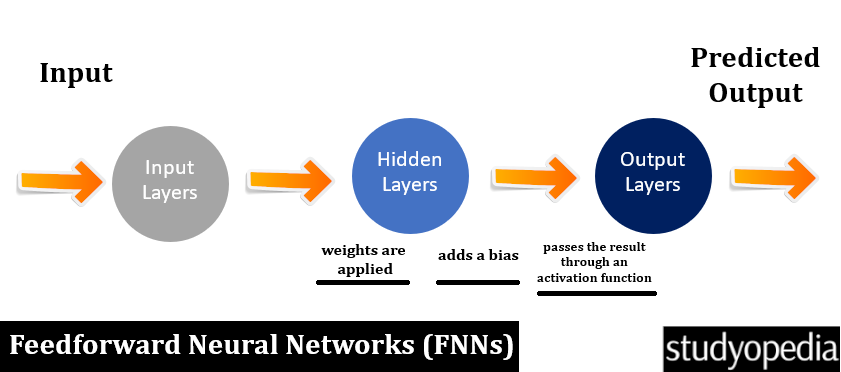06 Oct Feedforward Neural Networks (FNN)
Under the Feedforward Neural Networks (FNN), as the name suggests, the data flows in one direction i.e., the forward direction. This flow is from the input, through the hidden layers, and to the output. Cycles or loops are not present in the flow or the network.
Some amazing applications of Feedforward Neural Networks include speech recognition and image classification. Let us see the architecture:
Architecture of Feedforward Neural Networks

The above architecture displays the following process:
Process of Feedforward Neural Networks
The following is the FNN process:
- Step 1: The Input Layer has the input nodes to receive the raw data.
- Step 2: Now the hidden layers., the hidden nodes process the input raw data. Each node in the hidden layer takes inputs from the previous layer. After that,
- The weights are applied,
- Bias is added
- And the result is passed through an activation function.
- Step 3: The Output Layer produced the output. Each node in this layer is matched to an output category or value.
Applications of Feedforward Neural Networks
The following are the applications:
- Classification:
Image Recognition: For classification, for example: to classify images of cats and dogs.
Email spam detection: For detecting whether an email is spam or not.
- Regression:
Predicting: To predict continuous values. For example: stock prices
Advantages of Feedforward Neural Networks
The following are the advantages:
- The flow of data is in one direction avoiding cyclic dependencies.
- Used for both classification and regression tasks i.e., easily adaptable.
- FNN is effective for tasks with non-sequential data
Disadvantages of Feedforward Neural Networks
The following are the disadvantages:
- Not perfect for tasks involving sequential data
- The FNN process can lead to overfitting if lacks regularization. This can happen mostly with smaller datasets.
- Considers only the current input
- Cannot memorize previous inputs
If you liked the tutorial, spread the word and share the link and our website Studyopedia with others.
For Videos, Join Our YouTube Channel: Join Now
Read More:


No Comments